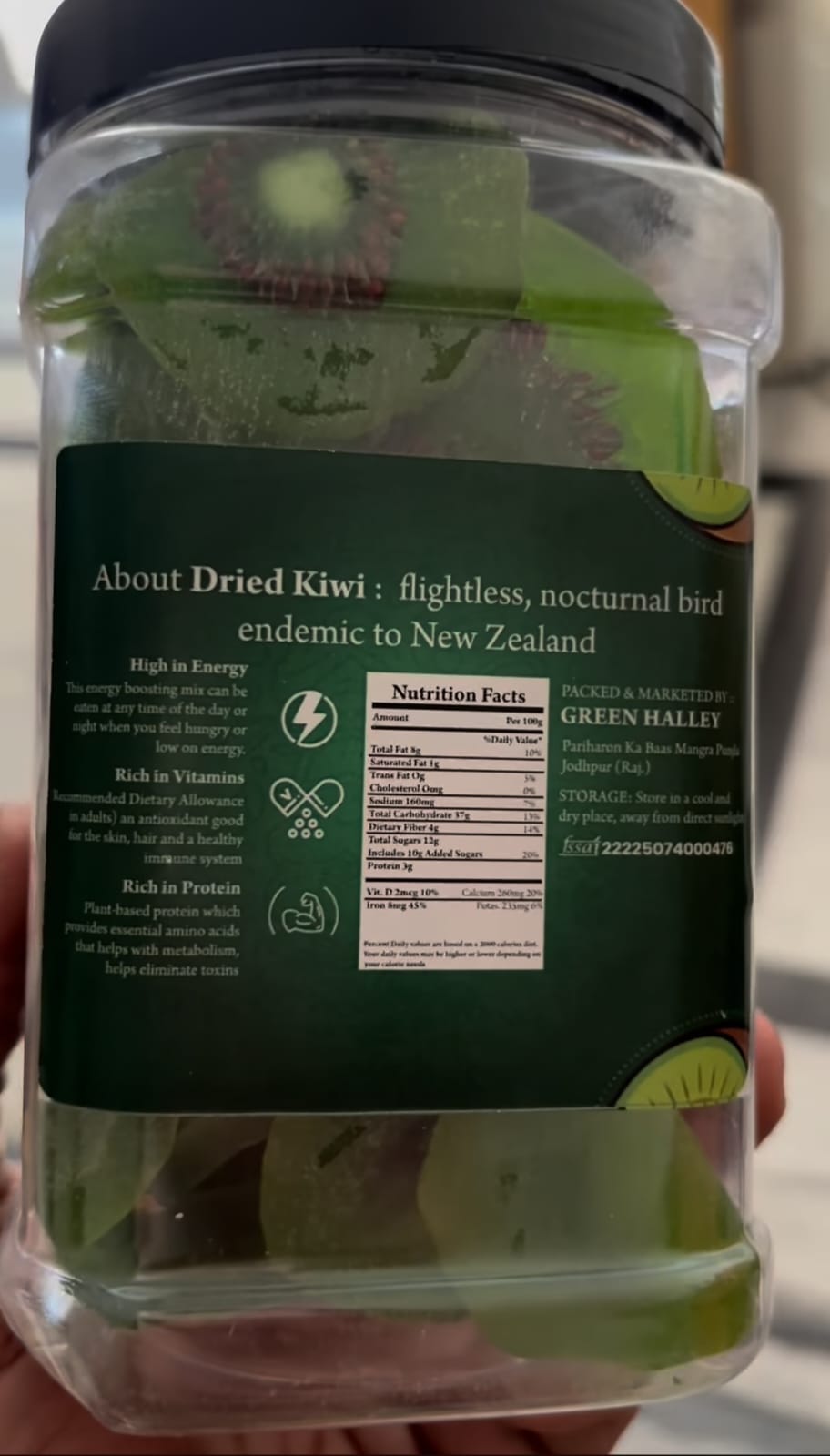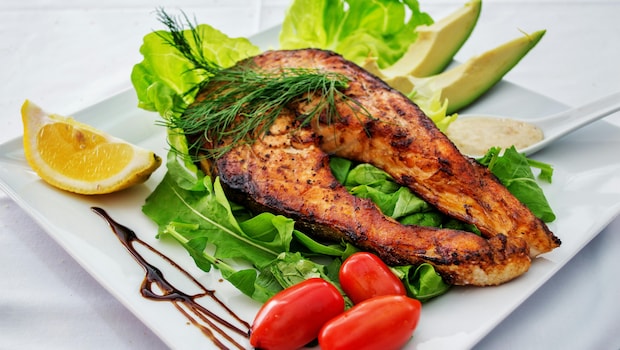Fish lovers argue about this at markets and dinner tables - does the sea produce a better catch than rivers and lakes? The short answer: it depends. Saltwater and freshwater fish bring different flavours, textures and nutritional profiles to the plate. Below, we will talk about the sensory differences, the science on nutrients (especially omega-3s), and the safety points you should know - so you can choose the right fish for taste and health.
Also Read: How To Fry Fish Without Breaking It: Expert Guide To Perfect Fried Fish Every Time
Difference Between Seawater Fish And Freshwater Fish
1. Taste and texture: briny vs mild
Saltwater fish typically taste "brinier" - a subtle mineral, savoury note that comes from living in the ocean's saline environment. Many sea species (salmon, tuna, mackerel) also have firmer, oilier flesh, which gives them a richer, fuller mouthfeel and makes them suited to grilling, sashimi or robust sauces. Freshwater fish (carp, catfish, tilapia) tend to be milder, leaner and often flakier - a blank canvas that takes well to delicate seasoning and light cooking.
If you prefer bold, oceanic flavours, saltwater fish usually win; if you like something gentle and adaptable, freshwater fish may be your go-to.
2. Nutrition: Which fish type packs more of the good stuff?
Omega 3:
A big nutritional headline is omega-3 long-chain polyunsaturated fatty acids. These are linked to heart and brain benefits, and marine fish generally contain higher amounts of fatty acids than many freshwater species. Research in PubMed Central shows that common marine species (salmon, sea bass, cod, barramundi) often have substantially more omega-3s than freshwater carp and similar species. That said, some freshwater species and farmed varieties can still be good sources of omega-3s depending on diet and rearing conditions.
Protein & Vitamin D:
Protein content is broadly similar across both groups - fish is a lean, complete protein source. Vitamins and minerals vary by species: many marine fish are richer in vitamin D, iodine and certain trace minerals due to the ocean environment, while freshwater species can provide comparable amounts of B vitamins and minerals depending on their diet and habitat. Recent reviews suggest saltwater fish may have higher averages for vitamin D and some fat-soluble nutrients, but individual species differences matter most.
3. Safety: contaminants and mercury
Nutritional benefits come with a caveat - contaminant levels vary. Mercury and other pollutants accumulate more in large, long-lived predatory fish (e.g., swordfish, shark, some tunas) whether from sea or fresh water. A PubMed Central study reports higher mean mercury in certain marine species, while others have found elevated mercury in freshwater fish from contaminated rivers and lakes.
The practical takeaway: favour smaller, lower-trophic species (sardines, anchovies, salmon, tilapia, catfish) for regular consumption, and heed local advisories for fish from particular waters.
4. Cooking and availability
Taste preferences interact with how you cook fish. Oily, sea fish handle high-heat methods and raw preparations well; milder freshwater fish shine when gently poached, steamed or pan-fried with light aromatics. Availability and price also influence choice - in many regions, freshwater fish are cheaper and more accessible, while certain sea fish can be seasonal or pricier.

Fish can be turned into delicious food.
Verdict: Seawater Fish And Freshwater Fish? Which Is Better?
- If your priority is omega-3 intake and bold flavour, many saltwater species come out ahead.
- If you want a mild-tasting, versatile, often more affordable option, freshwater fish are excellent.
Most nutrition experts recommend variety: aim for 2-3 servings of a mix of low-mercury fish per week to maximise benefits while limiting contaminants. Choose species and sources wisely - species matters far more than "sea vs fresh" alone.
Fish Cooking and Cultural Preferences
In Indian cuisine, the choice often comes down to region and tradition.
- Coastal areas - like Kerala, Goa and Bengal - naturally favour seawater fish such as mackerel, pomfret and sardines.
- Inland states prefer river and pond fish such as rohu, katla and singhi, which are more accessible and affordable.
- Saltwater fish often work better in tandoor, grill, or fry preparations, while freshwater fish shine in curries and stews where they absorb complex masalas beautifully.
Also Read: Hilsa Fish To Kerala Fish Curry: 7 Fish Curries From Around The Country
Best Low-Mercury, High-Omega-3 Indian Fish Recipes to Try
From the Sea:
1. Salmon (Wild or Responsibly Farmed)
Why choose it: Rich in omega-3 fatty acids and vitamin D.
Indian recipe idea: Tandoori Salmon - marinate salmon fillets in yoghurt, garlic, ginger, red chilli, turmeric, and garam masala. Grill until charred and serve with mint chutney.
2. Sardines (Mathi or Pedvey)
Why choose it: Tiny, low in mercury, and rich in calcium.
Indian recipe idea: Kerala-Style Sardine Curry (Mathi Curry) - sardines cooked in a spicy coconut milk gravy with tamarind, curry leaves, and red chilli.
3. Mackerel (Bangda)
Why choose it: High in omega-3s and firm-textured.
Indian recipe idea: Goan Bangda Curry - mackerel simmered in a tangy coconut and kokum gravy, flavoured with coriander, cumin, and garlic.
4. Anchovies (Nethili or Kozhuva)
Why choose it: Small, nutrient-dense fish with strong umami flavour.
Indian recipe idea: Nethili Fry - marinate with turmeric, chilli powder, and rice flour; shallow fry till crisp.
Also read: 8 Best Bengali Fish Recipes | Popular Fish Recipes | Easy Fish Recipes

Indian cuisine offers varied fish recipes.
Photo Credit: iStock
From Freshwater
5. Rohu (Indian River Carp)
Why choose it: Popular across North and East India; good source of omega-3s.
Indian recipe idea: Bengali Macher Jhol - rohu pieces cooked in a mustard-tomato gravy with potatoes and cumin.
6. Catfish (Magur or Singhi)
Why choose it: Lean and low in mercury.
Indian recipe idea: Assamese Tenga Curry - catfish cooked in a tangy tomato and elephant apple gravy.
7. Tilapia
Why choose it: Mild-tasting and widely available.
Indian recipe idea: Tilapia Masala Fry - marinate with ginger-garlic paste, lemon juice, and red chilli; pan-fry till golden.
8. Trout (especially Rainbow Trout)
Why choose it: Similar omega-3 profile to salmon, found in Himalayan streams.
Indian recipe idea: Kashmiri Trout Fry - coat with Kashmiri chilli and fennel, fry in mustard oil for a flavourful twist.
Both seawater and freshwater fish have a place on your plate. Variety, freshness and balance are what truly make a seafood diet healthy and delicious.
About Neha GroverLove for reading roused her writing instincts. Neha is guilty of having a deep-set fixation with anything caffeinated. When she is not pouring out her nest of thoughts onto the screen, you can see her reading while sipping on coffee.











